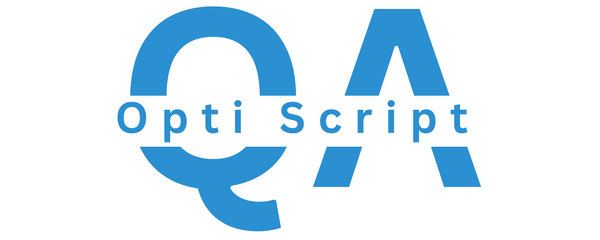In the dynamic world of web and mobile app development, ensuring a flawless visual presentation is crucial. Automated visual testing has emerged as a powerful tool to help developers maintain high standards of visual quality. But what exactly is automated visual testing, and how can it benefit your digital products? Let's explore the significance of this testing method and its impact on websites and apps.
What is Automated Visual Testing?
Automated visual testing involves the use of specialised tools to automatically verify the visual correctness of a website or app. These tools compare the current state of the user interface (UI) against a baseline image or design specification, highlighting any discrepancies. Unlike traditional functional testing, which focuses on the functionality of an application, visual testing ensures that the UI appears as intended across different devices and browsers.
The Importance of Automated Visual Testing
1. Consistent User Experience
One of the primary reasons for automated visual testing is to ensure a consistent user experience. Users expect websites and apps to look and function seamlessly across various devices and screen sizes. Automated visual testing helps identify issues such as misaligned elements, broken layouts, and missing images that can disrupt the user experience.
2. Efficiency and Speed
Manual visual testing can be time-consuming and prone to human error. Automated visual testing significantly speeds up the process, allowing for quicker detection and resolution of visual defects. This efficiency is particularly beneficial in agile development environments, where rapid iterations are common.
3. Early Detection of Visual Bugs
Visual bugs can occur at any stage of development, often due to changes in code, third-party integrations, or browser updates. Automated visual testing enables continuous monitoring of the UI, catching visual discrepancies early in the development cycle. Early detection helps prevent costly fixes later and ensures that visual quality is maintained throughout the project.
4. Improved Collaboration
Automated visual testing tools often provide detailed reports with screenshots highlighting visual differences. These reports facilitate better communication between developers, designers, and testers, ensuring that visual issues are clearly understood and addressed. Improved collaboration leads to faster resolution and higher-quality outcomes.
Benefits of Automated Visual Testing for Websites and Apps
1. Cross-Browser and Cross-Device Compatibility
Websites and apps must perform consistently across different browsers and devices. Automated visual testing tools can run tests on multiple configurations simultaneously, ensuring that the UI looks perfect regardless of the platform. This comprehensive approach saves time and ensures broader compatibility.
2. Regression Testing
Every time new code is added or existing code is modified, there's a risk of introducing visual bugs. Automated visual testing makes regression testing efficient by automatically comparing the new version of the UI with previous versions. This ensures that recent changes haven't negatively impacted the visual integrity of the application.
3. Enhanced User Satisfaction
A visually consistent and appealing UI enhances user satisfaction and engagement. Automated visual testing helps maintain high visual standards, leading to a more polished and professional product. Satisfied users are more likely to stay engaged, recommend your app, and remain loyal customers.
Downsides of Not Utilising Automated Visual Testing
1. Increased Manual Workload
Without automated visual testing, teams must rely on manual checks to verify visual correctness. This process is not only laborious but also susceptible to human error. Important visual discrepancies might be overlooked, leading to a subpar user experience.
2. Delayed Detection of Issues
Manual testing can be slow, delaying the detection of visual issues until later stages of development or even post-release. This can result in costly fixes, user dissatisfaction, and potential harm to your brand's reputation.
3. Inconsistent Visual Quality
Relying solely on manual testing increases the risk of inconsistent visual quality across different releases and platforms. This inconsistency can frustrate users and undermine the perceived quality of your product.
4. Competitive Disadvantage
In a highly competitive market, maintaining a high standard of visual quality is crucial. Automated visual testing helps ensure that your product stands out by delivering a consistently polished and professional appearance. Neglecting this aspect can put you at a disadvantage compared to competitors who prioritise visual quality.
Conclusion
Automated visual testing is an indispensable tool for ensuring the visual integrity of websites and apps. By providing consistent user experiences, speeding up the testing process, and facilitating early detection of visual bugs, it helps maintain high visual standards throughout the development lifecycle. The benefits extend to cross-browser and cross-device compatibility, efficient regression testing, and enhanced user satisfaction. Ignoring automated visual testing, on the other hand, can lead to increased manual workload, delayed issue detection, inconsistent visual quality, and a competitive disadvantage. In a digital landscape where first impressions matter, automated visual testing is essential for delivering flawless and visually appealing digital products.
OptiScript QA can assist you with your automated visual testing needs. We provide bespoke automation frameworks tailored to ensure your digital products maintain impeccable visual quality. Let us help you deliver a seamless and engaging user experience. Contact us today via info@optiscriptqa.co.uk to explore how we can elevate your automation testing capabilities!

